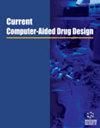Mechanism of Shenfu Injection in Treating Ischemic Stroke Elucidated using Network Pharmacology and Experimental Validation
IF 1.6
4区 医学
Q4 CHEMISTRY, MEDICINAL
引用次数: 0
Abstract
Background: Shenfu injection was derived from the classical Chinese medicine formula ‘Shenfu decoction’, which was widely used in the treatment of cardiovascular and cerebrovascular diseases in clinical practice. background: Shenfu injection is derived from the classical Chinese medicine formula ‘shenfu decoction’, which is widely used in the treatment of cardiovascular and cerebrovascular diseases in clinical practice. Objectives: Predict the main active ingredients, core targets, and related signaling pathways of Shenfu injection in the treatment of ischemic stroke. objective: Predicting the main active ingredients, core targets, and related signaling pathways of shenfu injection in the treatment of ischemic stroke. Methods: Databases were used to collect the active ingredients and target information of Shenfu injection; GO and KEGG pathway enrichment analyses were performed using the David database. The effects of Shenfu injection on core targets were verified using molecular docking and in vivo experiments. method: Databases were used to collect the active ingredients and target information of shenfu injection; GO and KEGG pathway enrichment analysis were performed using David database.The effects of shenfu injection on core targets were verified using molecular docking and in vivo experiments. Results: The predicted results identified 44 active ingredients and 635 targets in Shenfu injection, among which 418 targets, including TNF, IL-6, MAPK1, and MAPK14, were potential targets for the treatment of ischemic stroke. Molecular docking revealed that the active ingredients had good binding to IL-6, MAPK1, and MAPK14. In vivo experiments demonstrated that Shenfu injection significantly improved the pathological damage due to ischemic stroke, promoted the expression of tight junction proteins, and inhibited MMP-2 and MMP-9 expressions, thereby reducing BBB permeability. Animal experiments revealed that Shenfu injection could inhibit p38、JNK and ERK phosphorylation. Conclusions: Mechanism of Shenfu injection in treating ischemic stroke may be via inhibition of the inflammatory factors levels and protecting the BBB, thereby warranting subsequent studies and highlighting its potential as a reference for new drug development.利用网络药理学和实验验证阐明神浮注射液治疗缺血性中风的机制
背景介绍神府注射液源于中医经典名方 "神府煎",在临床上被广泛应用于心脑血管疾病的治疗。 背景:神府注射液源于中医经典名方 "神府煎",在临床上被广泛应用于心脑血管疾病的治疗:神衰注射液源自中医经典名方 "神衰汤",临床上广泛用于心脑血管疾病的治疗。研究目的预测参附注射液治疗缺血性中风的主要有效成分、核心靶点及相关信号通路:预测神扶注射液治疗缺血性脑卒中的主要活性成分、核心靶点及相关信号通路。方法利用数据库收集神浮注射液的有效成分和靶点信息;利用David数据库进行GO和KEGG通路富集分析。通过分子对接和体内实验验证神府注射液对核心靶点的作用:利用David数据库收集神府注射液的有效成分和靶点信息,进行GO和KEGG通路富集分析,利用分子对接和体内实验验证神府注射液对核心靶点的作用。结果预测结果表明,神府注射液中含有44种有效成分和635个靶点,其中包括TNF、IL-6、MAPK1和MAPK14在内的418个靶点是治疗缺血性脑卒中的潜在靶点。分子对接显示,其活性成分与IL-6、MAPK1和MAPK14具有良好的结合力。体内实验表明,神衰注射液能明显改善缺血性脑卒中的病理损伤,促进紧密连接蛋白的表达,抑制MMP-2和MMP-9的表达,从而降低BBB的通透性。动物实验表明,神甫注射液可抑制p38、JNK和ERK磷酸化。结论神浮注射液治疗缺血性脑卒中的机制可能是通过抑制炎症因子水平和保护BBB,因此值得后续研究,并突出了其作为新药开发参考的潜力。
本文章由计算机程序翻译,如有差异,请以英文原文为准。
求助全文
约1分钟内获得全文
求助全文
来源期刊

Current computer-aided drug design
医学-计算机:跨学科应用
CiteScore
3.70
自引率
5.90%
发文量
46
审稿时长
>12 weeks
期刊介绍:
Aims & Scope
Current Computer-Aided Drug Design aims to publish all the latest developments in drug design based on computational techniques. The field of computer-aided drug design has had extensive impact in the area of drug design.
Current Computer-Aided Drug Design is an essential journal for all medicinal chemists who wish to be kept informed and up-to-date with all the latest and important developments in computer-aided methodologies and their applications in drug discovery. Each issue contains a series of timely, in-depth reviews, original research articles and letter articles written by leaders in the field, covering a range of computational techniques for drug design, screening, ADME studies, theoretical chemistry; computational chemistry; computer and molecular graphics; molecular modeling; protein engineering; drug design; expert systems; general structure-property relationships; molecular dynamics; chemical database development and usage etc., providing excellent rationales for drug development.
 求助内容:
求助内容: 应助结果提醒方式:
应助结果提醒方式:


